Top 10 Ways to Save Money on Real Food: How to Save 50% Eating Organic
Here are my top 10 ways to save money on real food. Not all of these tips will work for everyone, but hopefully you will find some things that will be of value to you.
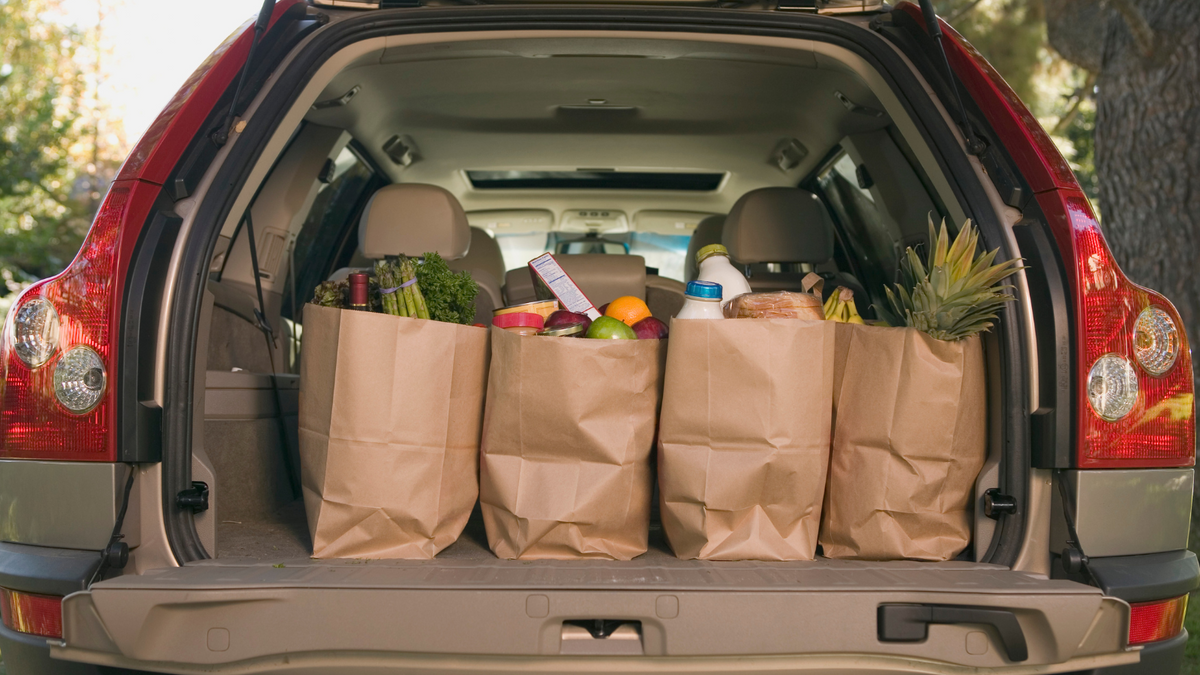
Everyone wants to know how to save money on real food — it’s the most common question I get. In fact, one of the biggest objections I hear about eating real food (natural and organic food, traditionally prepared), is that it’s too expensive.

But the truth is, cooking real food really isn’t expensive when you know how to do it. There are so many ways to save!
Top 10 Ways to Save Money on Real Food: How to Save 50% Eating Organic
Here are my top 10 ways to save money on real food. Not all of these tips will work for everyone, but hopefully you will find some things that will be of value to you.
1. Buy Whole Chickens Instead of Chicken Breasts
This is my number one tip to save 50% on organic food. Most people buy chicken breasts but if you start buying whole organic chickens instead, you will save at least 50%.
Whole organic chickens cost anywhere from $2.50 to $5 per pound. Meanwhile, organic skinless, boneless chicken breasts cost $9-10 (or more) per pound. (Source)
When you buy a whole chicken for $2.50/pound instead of $10/pound, you’re saving 75%.

I typically roast the chicken or cook it whole in my Instant Pot pressure cooker. I get one meal from the roast chicken, and then have leftovers to use for another meal or sometimes two — I make tacos, enchiladas, chicken soup, chicken salad, white bean chicken chili, nachos, and the like.
And yes, you end up using all of the chicken because you are using the bones to make bone broth. Here’s my recipe for basic chicken stock, and my new and improved recipe for fast and easy pressure cooker bone broth.
I also use the strained bones and meat and fat from making bone broth to feed our cats. The bones turn to mush after an hour or so in the Instant Pot. Then I just run them through my Cuisinart, add sardines, egg yolks, sometimes chicken liver… and voila! Very healthy and inexpensive pet food. (No, it’s not raw — if you have your dog or cat on a raw diet, this is not the same thing.)
Here’s my recipe for roast chicken.
2. Grow Your Own Food
You can grow a lot of food in most backyards. Don’t have a backyard? Plant in your front yard. I ripped out my front yard and now produce a ton of veggies.
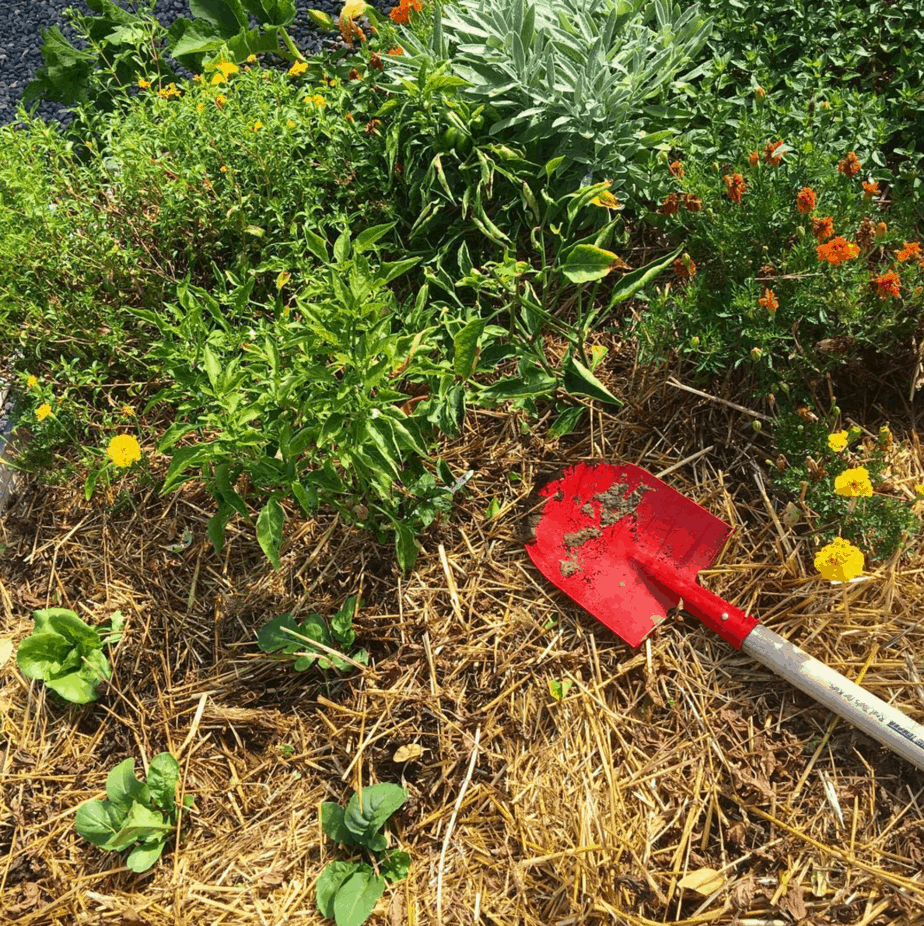
I grow everything: potatoes, lemons, tomatoes, zucchini, celery, strawberries, carrots, onions, peppers — I even grew watermelons a couple summers ago and got a harvest of about 20 watermelons! I also grow herbs, everything from basil to oregano to sage and thyme and rosemary.
I just dry them in my dehydrator, or just walk outside and pick them fresh to use in recipes.
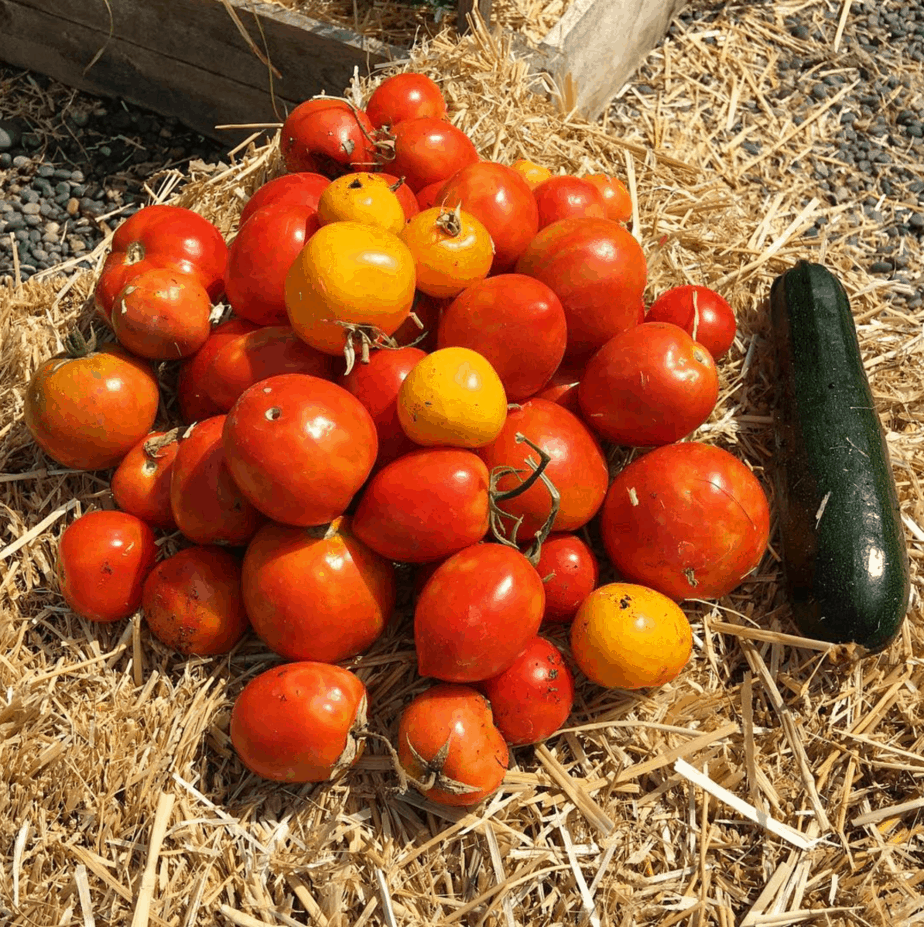
I get at least 50-75 artichokes every spring. I’ll probably get more this year — the number increases every year since I first planted them 3 years ago. I don’t know what an organic artichoke costs, but a regular non-organic artichoke costs $1-3 each.
I do nothing to my artichokes except spread a little manure, compost and straw (for mulch) twice a year. Artichokes are perennials so they self-seed and come back every year. I have a sprinkler system which is on a timer, so I literally do almost nothing and I get artichokes — for free! (I would be watering the lawn so it’s not like I’m spending anything extra to water my artichokes.)
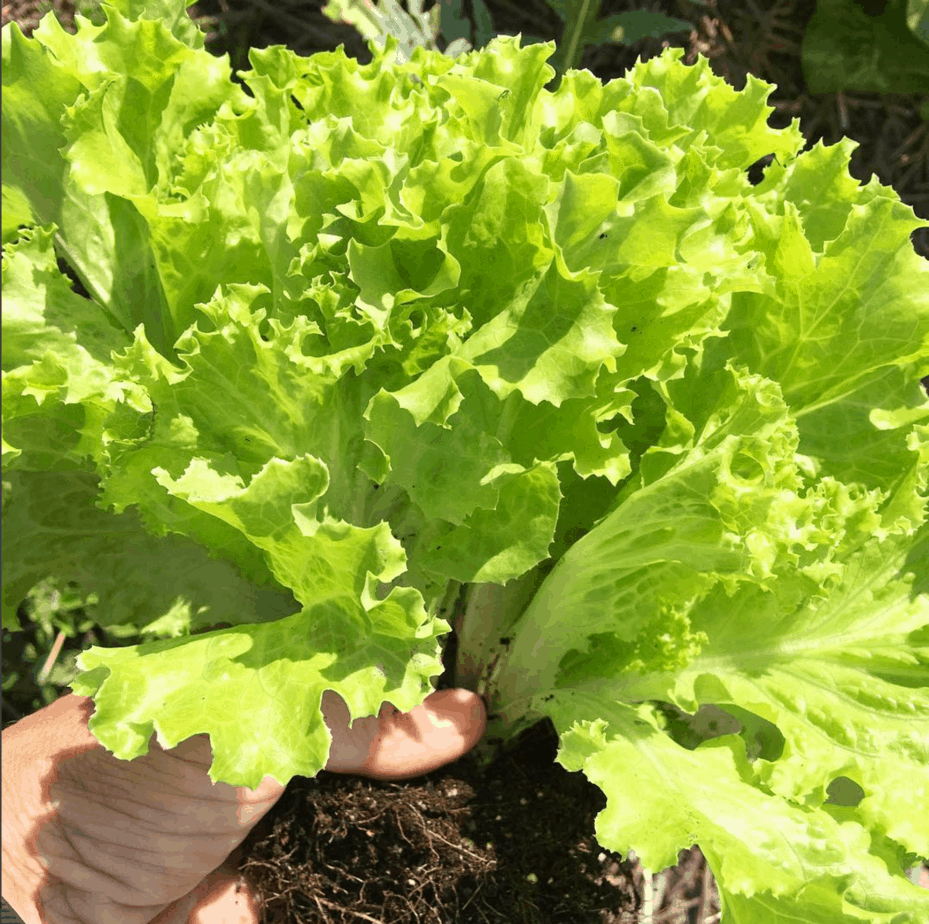
A head of organic lettuce costs $2-4. Do you know how cheaply you can grow lettuce? Even if you were to buy organic lettuce starters instead of seeds, you can get 6 for a couple bucks. That’s around 30 cents per head of lettuce — which is a savings of 90%.
Even better — buy lettuce seeds. You can buy a packet of 1,000 lettuce seeds for around $3. That’s .003 (or 1/3 of a cent) per head of lettuce. Can someone do that math for me? The savings is astronomical!
If you’re more adventurous and have more room, you can keep animals. Backyard chickens lay eggs that you can eat — and people say they are a lot of fun. I can’t have any in LA — my yard is just a tad too small. If you have room, goats, sheep and cows will provide milk which you can use to make yogurt, butter and cheese.
3. Buy in Bulk
If you buy organic beans and rice in bulk, you can save 50% or more. Buying big bags of rice and wheat berries will save you a lot instead of buying smaller amounts. I also buy my coconut oil in 5 gallon buckets online (coconut oil has a super long shelf life). Dried beans are a LOT cheaper than canned beans. All you have to do is soak them. And it’s super easy to sprout your own grains and make sprouted flour at home.
Ordering from Amazon Subscribe & Save and Azure Standard (see below), are great tools to order in bulk. You do end up with huge boxes of toilet paper, big bags of wheat berries and sea salt. But that’s how you save. And most of us have somewhere we can store these things. In the garage, or in a hall closet.
It’s a good idea to buy some storage containers for bulk items. I buy dried beans, wheat berries, rice, and sea salt in bulk and store them in airtight containers. Here’s an article on how to store bulk grains.
I also buy pastured meat in bulk from local farmers. You can save a ton on grass-fed beef when you order a half or quarter of a cow, or you can buy a whole pig. You’ll need a chest freezer but you could always share a freezer with some friends or a neighbor.
4. Bake Your Own Bread, Pizza and Other Grains
If you buy wheat berries in bulk, mill your own flour, and make your own sourdough starter, you can save 50-75%. A loaf of organic bread costs anywhere from $3-5.
You can buy organic wheat berries for as anywhere from 50 cents to $1 per pound. It takes about a pound of wheat berries to make a loaf of bread. The only ingredients in bread are water, flour and starter. So that means you can make a loaf of bread with 100% organic whole wheat flour for around $1.
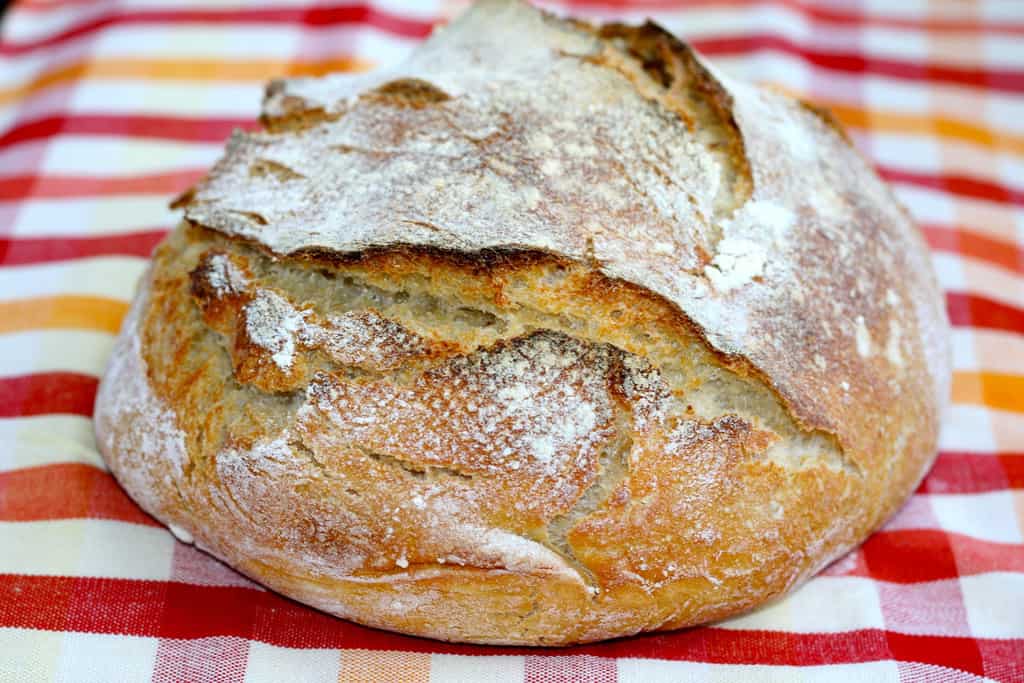
Here’s my recipe for no-knead sourdough bread.
Here’s my recipe for pizza.

Here’s my recipe for sourdough starter.
I use and recommend this grain mill to mill your own flour.
I also recommend not buying cereal and other processed grains because they are very expensive. French toast or cinnamon toast is yummy — and you can use bread that’s starting to go stale.
I also use leftover bread for French onion soup and bread crumbs which you can use for all kinds of things, from croutons to Italian meatballs to fried foods.
5. Do Meal Planning
Plan meals! When we fail to plan our meals, that’s when we have to run to the store and buy prepared food or order a pizza.
I am a big believer in routines. We do regular routines like Pizza Fridays, Sunday Roast, and Taco Tuesdays (you can use leftover chicken, beef or pork from your Sunday roast).
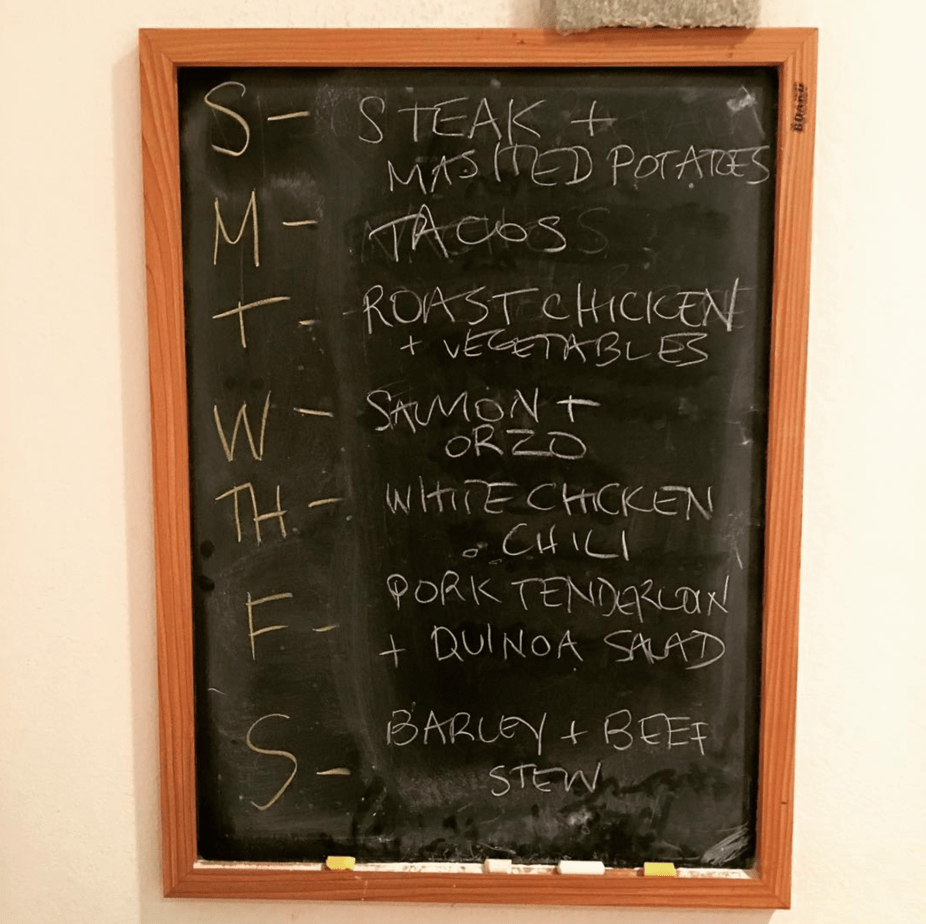
This can be very simple. I keep a menu on a chalkboard in the dining room to let everyone know what we will be eating. This way I can defrost whole chickens or soak oatmeal ahead of time.
6. Make Your Own Soft Drinks and Tea
You can save 70% on store-bought soft drinks by making your own kefir soda pop. This is so easy to do and it costs a penny per ounce — that’s 1/3 of what it costs for Coke or any other soda. (You will save even more if you are buying organic soda.)
You may have read that I no longer recommend kombucha and tea after I found out how high it is in fluoride. If you’ve been buying tea or organic black or green tea, yes, that is also high in fluoride. I only recommend herbal tea now — and this is so easy to grow in your garden.
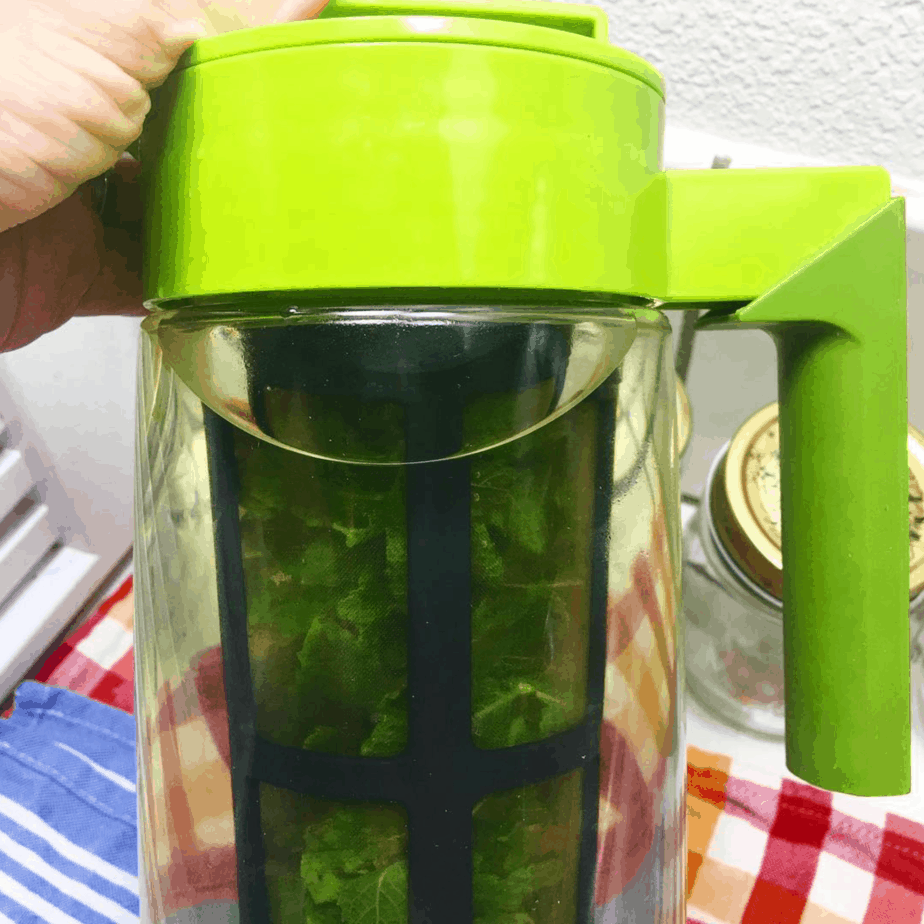
I bought one of these iced tea pitchers on Amazon and I just add filtered water and fresh or dried herbs from my garden. You can either steep the herbs in hot water or you can add cold water and let it sit in the fridge overnight.
I use a different herbs for herbal tea: spearmint, peppermint, lemon balm, lemongrass, chamomile. It costs me literally nothing to make herbal tea! These herbs grow like weeds in my garden. I also add stevia, which I grow in my garden, too.
7. Stop Buying Expensive Cleaning Products
I have gotten rid of all my expensive household cleaning products and now I only use 4 things:
1. Vinegar
2. Baking soda
3. Norwex microfiber cloths and Norwex mop (cleans with just water)
5. Essential oils (not necessary but I just love the smell of a clean house — especially peppermint and lavender)
I have done the math and even with the essential oils (you only use a few drops), you save over 90% cleaning with water, baking soda and vinegar. We use the microfiber cloths on pretty much everything from glass to wood to stainless steel — with just water. We mop all of our floors with the microfiber mop and just water and a few drops of essential oil.
For the toilets, bathtubs, showers and sinks, we use vinegar and baking soda.
8. Shop with Amazon Subscribe & Save
I’ve been an Amazon Prime member for years, but I only recently discovered the awesomeness of Amazon Subscribe & Save.
To be honest, I was scared to try Amazon Subscribe & Save because I thought if I subscribed, I’d forget and end up with too much stuff and have boxes everywhere that I had to return. But Amazon makes it really easy to keep track of what you subscribe to, and you can cancel or hold a subscription at any time.
I also wasn’t sure if I would save a lot of money — but I did the math and you can save as much as you do with Costco — AND you don’t have to actually GO to Costco.
Here’s how it works. Think of an item that you buy over and over again, preferably something that has a long shelf life and you can store in a cupboard or in the garage. Like dog food, paper towels, kitty litter, dishwashing liquid, batteries.
Now, go to Amazon Subscribe & Save and start shopping. The shipping is FREE (you don’t even have to be a Prime member). If you have 5 items in your Shop & Save delivery, you save 15%.
OK, here’s the real secret about why Amazon Subscribe & Save is so fantastic… not only is your TIME worth money but your brain space is equally important!
Everybody is too busy these days and we are all overloaded with too much information. So many things to keep track of! So why clutter your brain space with whether or not you picked up the paper towels at the grocery store? Just set it and forget it.
You can schedule your Amazon Subscribe & Save order to come every month, every 2 months, every 3 months, every 4 months or every 6 months. If it’s something like coffee or cat food that you use a lot of, you can get it every month. If it’s a huge bag of kitty litter, maybe you only need it every 4 months.
Remember, you can always change or delay your orders.
I know you will love it as much as I do. I don’t know how I ever lived without it. You’ll thank me later.
9. Shop with Azure Standard or Other Buying Clubs
In addition to Amazon Subscribe & Save, I love Azure Standard. I’m just getting started with it but the savings are fantastic.
Azure Standard is a natural food co-op in Oregon. They deliver orders by truck to drop points ranging from the West Coast to states as far east as Missouri. And they are continuing to expand.
To order, just join an existing drop point. If there is not a drop point near you, you can establish your own drop point if you have enough people to make the $550 order minimum each month. Each person’s order must be at least $50 to avoid a small order fee. (I send my nanny or assistant to pick up Azure orders — see #6 below.)
I’ve done a little calculating and there are some items that are definitely worth ordering via Azure Standard. Not all items, mind you. Some things are actually cheaper via Amazon.
10. Hire Help
We hired a part-time nanny to pick our daughter up from school every weekday and watch her after school. She also does the grocery shopping and she cooks dinner for us 5 nights a week.
I know it may seem strange to hire someone to shop and cook for you. Seems like it would cost you more than it would save you. But here we go again, not factoring in the value of our time.
If you earn more than $10 per hour, and you can pay someone $10 per hour to shop and cook for you (could be a college student, a babysitter, or your nanny or housekeeper), then it’s totally worth it to outsource it. If you get paid more, you can afford to pay more. Say you get paid $25 or $50 per hour. If you pay someone $15 or $20 per hour, you should be spending the time working instead.
If you work for yourself, this is a no-brainer. If you don’t work for yourself and have a fixed salary, see if you can get extra hours at your job. Or find some part-time work you can do at the same rate. Or, even better, start that side business you’ve been thinking of launching. There are tons of tax benefits for people who have a small business on the side.
One thing I’ve learned over the years: it’s always better to make more money than to save money. Sure, you can do both, but earning more is always more important. Because if you don’t have any money, you have no leverage.
The more money you have, the more leverage you have. So instead of just thinking about how to save money, use your noggin and think up some ways to make more money.
Pin This Post: Top 10 Ways to Save Money on Real Food: How to Save 50% Eating Organic
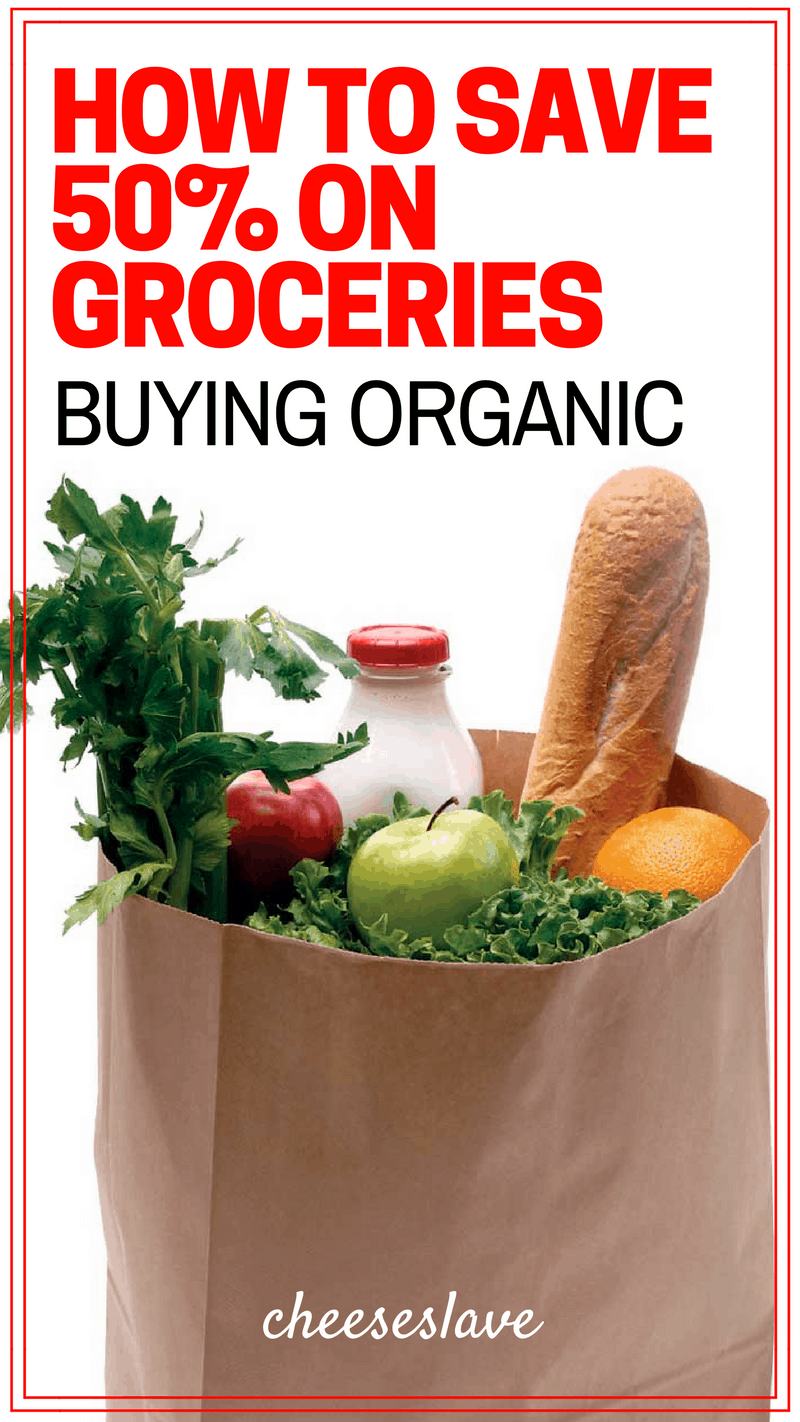
How Do You Save Money on Real Food?
Please share your tips below!

Comments ()